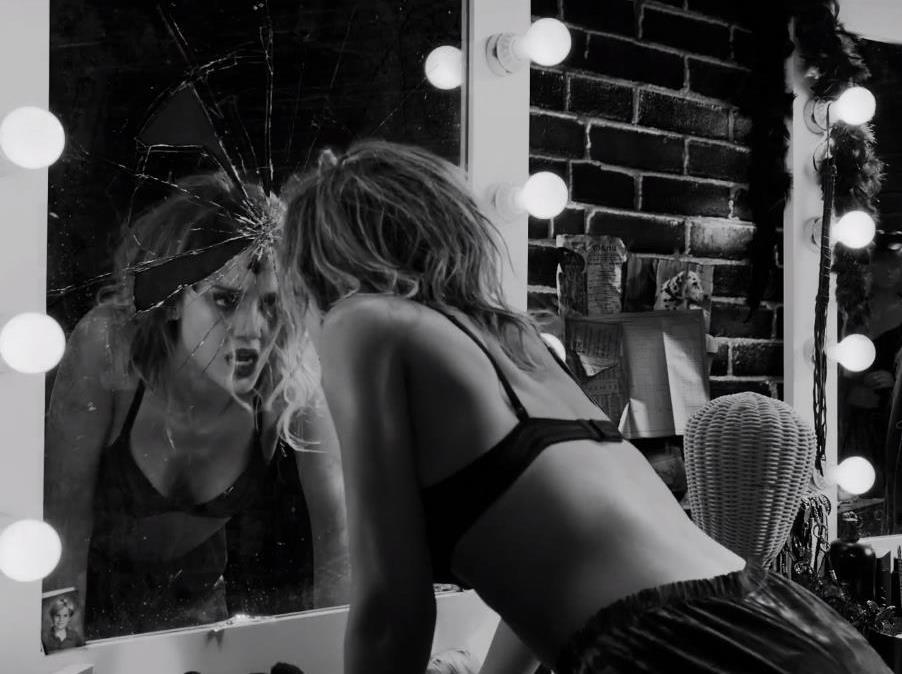Prior to 2005, taking the graphic-filled page to the screen had never looked quite like Robert Rodriguez’s vision of a comic book movie. Retaining the look, feel and tone of the source material, and bringing along author Frank Miller as co-director, he made a version of Sin City deemed not an adaptation but a translation of the original. A black-and-white palette and hyper-stylisation aped the illustrations, with comparable selective splashes of brighter colours for emphasis where needed. The film’s design and framing similarly mimicked its published inspiration; indeed, side-by-side comparisons of shots stunned in their fidelity.
Nine years later, the team of Rodriguez and Miller return with a sequel long-mooted, Sin City: A Dame to Kill For. Though the unmistakable aesthetic still regales, much is missing in the series’ repeat outing. Perhaps it is too late to tread down the familiar path, with the novelty of the initial offering wearing off. Perhaps glossy images can’t shelter dark vignettes more than once, despite a wealth of stories to choose from. Or, perhaps the second neo-noir effort’s focus on championing brooding anti-heroes in a wash of sex and violence can’t disguise content that extends beyond the realm of homage into troublesome territory.
Sin City: A Dame to Kill For again delves into the grim and gritty underworld of the fictional Basin City, where law and order are futile concepts and the lines between good and evil don’t reside where most would expect. With a smattering of recurring characters and a host of new faces to fill in the gaps, it flits before, after and around the trio of central tales of the first feature, using shifting narrators to help to piece the pulpy puzzle together.
Young gambler Johnny (Joseph Gordon-Levitt, Don Jon) arrives with luck on his mind, tussling with a still-corrupt Senator Roark (Powers Boothe, The Avengers). Attempting to reform, Dwight McCarthy (Josh Brolin, Labor Day) has a different face, but is unable to resist two former flames: headstrong lady of the night Gail (Rosario Dawson, Trance), and the sultry and manipulative Ava (Eva Green, 300: Rise of an Empire). Kidnap victim turned dancer Nancy (Jessica Alba, A.C.O.D.) can’t shake the consequences of her ordeal, or the bravery of her honest cop saviour, Hartigan (Bruce Willis, RED 2). The hulking Marv (Mickey Rourke, Immortals) loiters around the edges, pulled in different directions when his might and unreliable memory is needed.
That texture and variety is absent in Rodriguez and Miller’s follow-up is far from surprising, with the filmmakers clearly aiming for more of the same. The sequel is clearly predicated on retaining as much of its predecessor as possible, as characters once again ruminate over dark deeds with furrowed brows – whenever they’re not spraying blood and bullets, that is. Alas, the feature becomes scarcely more than an account of complicated men wearing the brunt of the women deemed the source of their problems. Though this similarly harks back to the initial outing, an added sense of aggression replaces any hope of investment. In aiming to imitate rather than evolve, and with nothing more to develop in old protagonists and little flesh given to new figures, hostility and misogyny become the film’s operating mindset.
The flimsiness of the narrative offers nothing in the way of assistance, a result of the best aspects of the printed tome being to put to use the first feature, leaving arguments over poker games and long-lost-lover’s quarrels understandably unable to conjure the same impact. When not trading blows with their enemies, the central trio of Dwight, Hartigan and Marv are relegated to quoting hardened maxims of the difficulty of life within such perilous confines, doing Brolin, Willis and Rourke few favours. Indeed, the always-evident charisma of Gordon-Levitt aside, much of the all-star cast – Ray Liotta (The Place Beyond the Pines), Christopher Meloni (Man of Steel), Juno Temple (Magic Magic) and Lady Gaga among them – are left in the same predicament. The lone exception crystalises not as a result of the material or execution, but courtesy of one standout performance, with the reliable Green a devilishly wicked delight as the titular temptress.
Rodriguez’s career of late has languished in replication, this is his third follow-up in succession after Spy Kids: All the Time in the World and Machete Kills. His commitment to his oeuvre is laudable; however freshness in content if not approach is needed. Attempting to repeat the same feat achieved with the original Sin City, but with lesser pieces and an overemphasis in the wrong areas, proves a fitful task at best. The film gleams where it should, yet nothing lingers beyond a parade of pretty pictures. All surface and no substance, Sin City: A Dame to Kill For is both hard-boiled and over-cooked.
Rating: 2 out of 5 stars
Sin City: A Dame to Kill For
Director: Frank Miller and Robert Rodriguez
USA, 2014, 102 mins
Release date: September 18
Distributor: Icon
Rated: MA
Actors:
Director:
Format:
Country:
Release:





